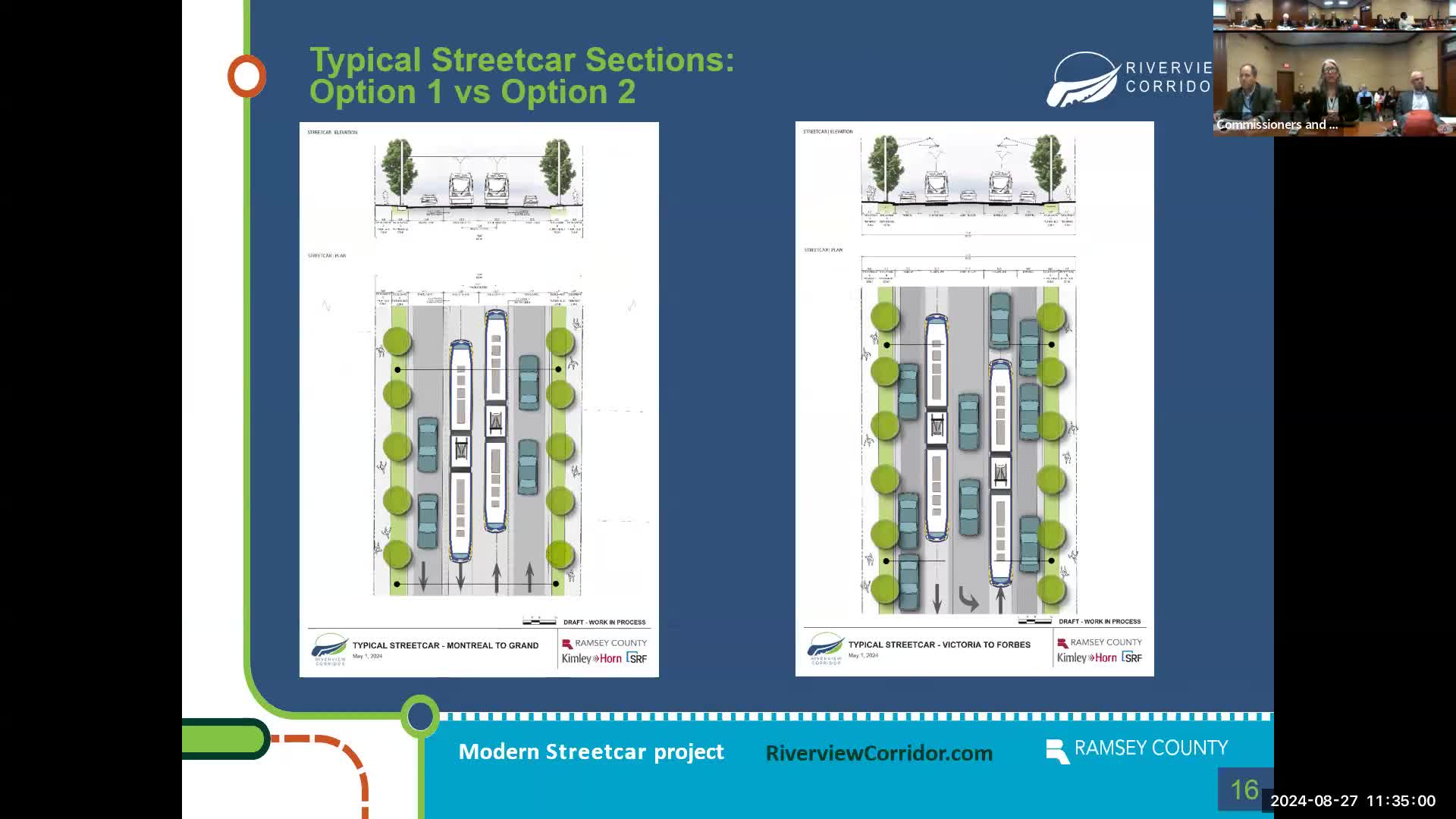City planners debate streetcar options amid safety concerns
August 27, 2024 | Ramsey County, Minnesota
This article was created by AI summarizing key points discussed. AI makes mistakes, so for full details and context, please refer to the video of the full meeting. Please report any errors so we can fix them. Report an error »

During a recent government meeting, officials discussed two proposed options for the integration of streetcar services into urban traffic, highlighting the trade-offs between maintaining on-street parking and ensuring efficient transit operations.
Option 1 proposes a dedicated travel lane for automobiles alongside a separate lane for the streetcar, which would eliminate on-street parking. This approach aims to streamline traffic flow but raises concerns about potential road rage and safety issues, as some drivers may misuse the dedicated lanes.
Conversely, Option 2 retains on-street parking but places the streetcar in mixed traffic, particularly from a designated point onward. This option could lead to congestion as the streetcar shares the road with vehicles, potentially slowing down transit times. Officials acknowledged that while this option preserves parking, it may introduce challenges related to traffic management and safety.
The discussion also touched on the design of streetcar stations, with proposals for both center-running and side-running configurations. Center-running stations would require parking to be moved to the side, while side-running stations would integrate into the sidewalk, removing parking only at specific locations.
Commissioners expressed concerns about the implications of mixed traffic on safety and efficiency, referencing experiences from other cities like Kansas City, where similar systems have been implemented. They noted that while some drivers may exhibit impatience, the overall functionality of such systems can vary based on local traffic dynamics.
The meeting underscored the need for a balanced approach that considers both the operational efficiency of the streetcar and the impact on local traffic and parking. As the city moves forward with planning, officials emphasized the importance of creating a pedestrian-friendly environment while addressing the complexities of urban transportation.
Option 1 proposes a dedicated travel lane for automobiles alongside a separate lane for the streetcar, which would eliminate on-street parking. This approach aims to streamline traffic flow but raises concerns about potential road rage and safety issues, as some drivers may misuse the dedicated lanes.
Conversely, Option 2 retains on-street parking but places the streetcar in mixed traffic, particularly from a designated point onward. This option could lead to congestion as the streetcar shares the road with vehicles, potentially slowing down transit times. Officials acknowledged that while this option preserves parking, it may introduce challenges related to traffic management and safety.
The discussion also touched on the design of streetcar stations, with proposals for both center-running and side-running configurations. Center-running stations would require parking to be moved to the side, while side-running stations would integrate into the sidewalk, removing parking only at specific locations.
Commissioners expressed concerns about the implications of mixed traffic on safety and efficiency, referencing experiences from other cities like Kansas City, where similar systems have been implemented. They noted that while some drivers may exhibit impatience, the overall functionality of such systems can vary based on local traffic dynamics.
The meeting underscored the need for a balanced approach that considers both the operational efficiency of the streetcar and the impact on local traffic and parking. As the city moves forward with planning, officials emphasized the importance of creating a pedestrian-friendly environment while addressing the complexities of urban transportation.
View full meeting
This article is based on a recent meeting—watch the full video and explore the complete transcript for deeper insights into the discussion.
View full meeting
